 Po Fook Hill Temple |
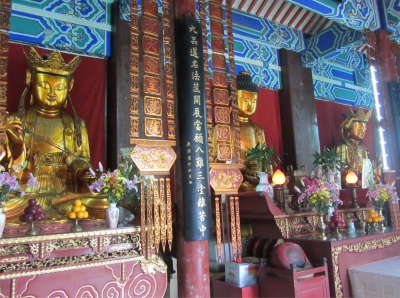 Po Fook Hill Temple Buddhas |
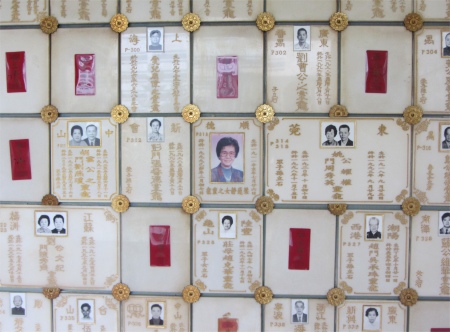 Po Fook Hill Temple Plaques |
Today we were up for more culture, so we took a train up into the New Territories, to Sha Tin. This was a modern high-rise town, surrounded by mountains. The first thing we noticed out here was the lack of English on signs. The town was busy, a working day was in full swing, doing whatever work they do out here. There seems to be no shortage of manpower for street cleaning, a never ending operation, as is the digging of holes and filling them in again.
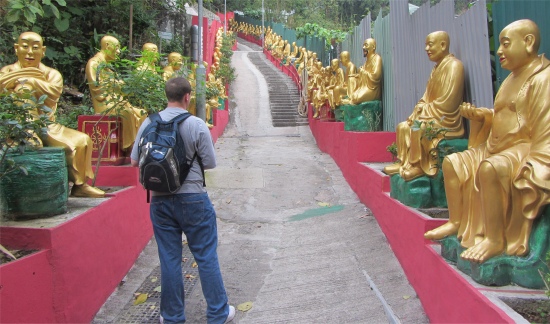 Climb Past the Golden Buddhas |
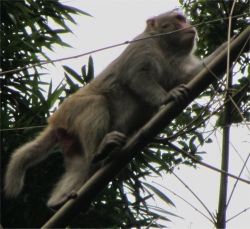 Wild Monkey |
Leading off to one side, a path took us to a series of escalators, which took us up a fair height to the rest of the temple complex. The ugly escalators rather spoiled the Yin-Yang of the place, but we were grateful we didn't have to climb up the hill.
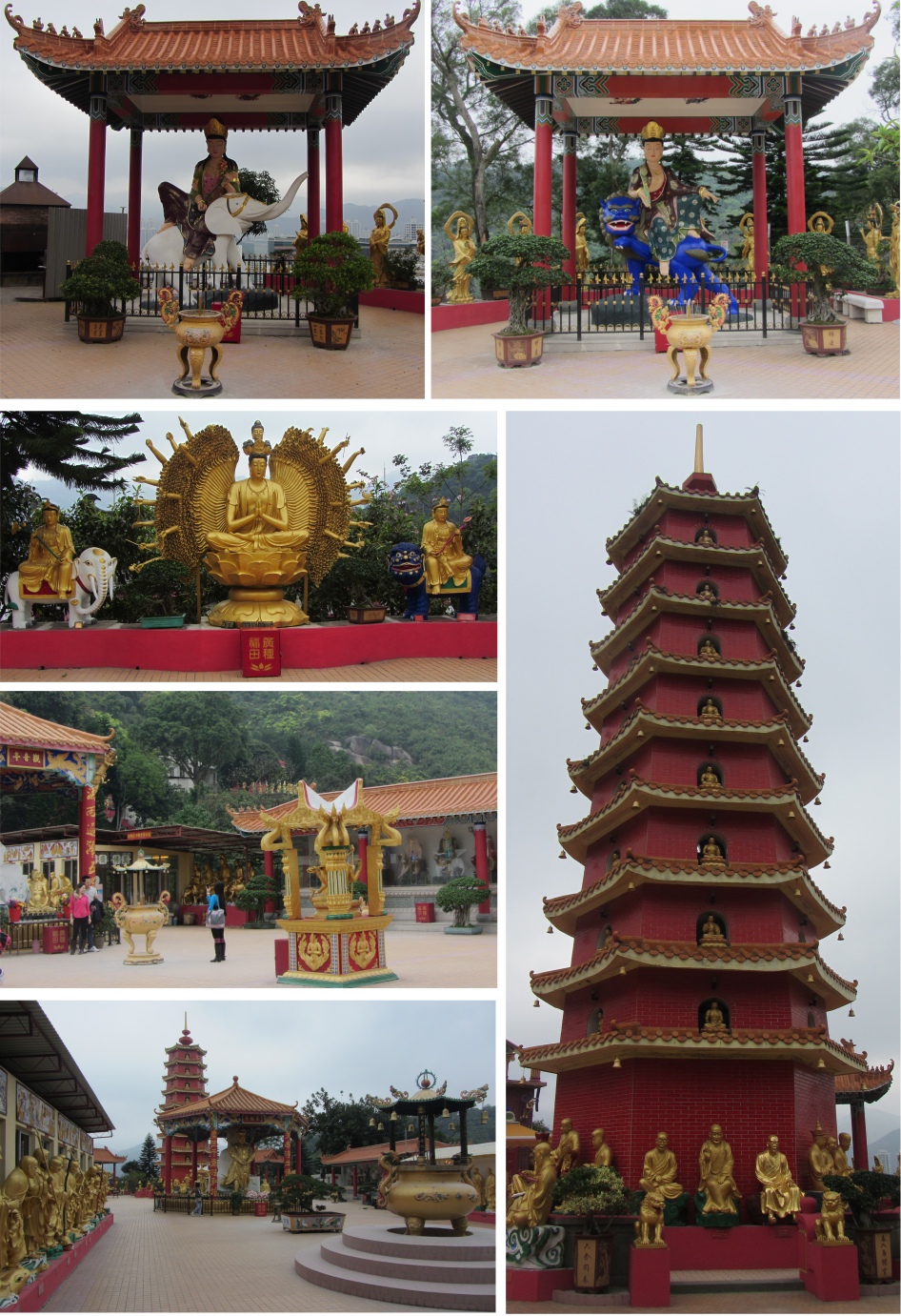 Ten Thousand Buddhas Monastery |
People streamed in and out of the complex, almost all with bundles of smoking incense sticks, which were waved in front of their departed ones' plaques as they bowed and prayed.
Some people brought flowers and placed them in a vase on the floor, others brought food and placed that on the floor in containers too. It wasn't just the elderly who visited and prayed, there was as many young people too.
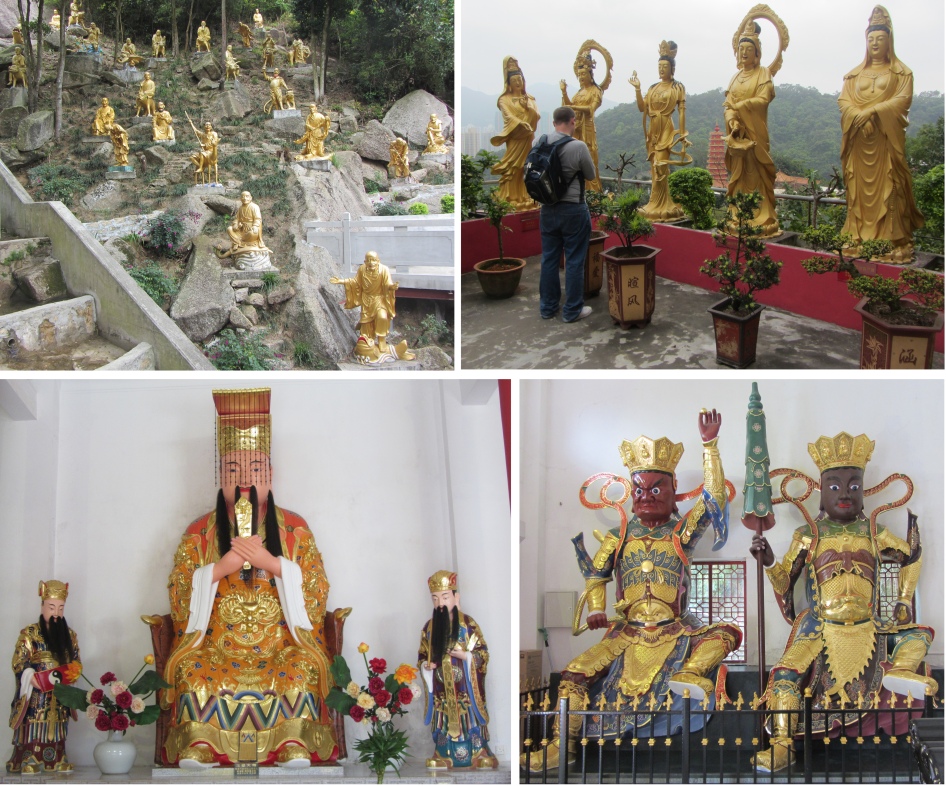 Upper Level of Ten Thousand Buddhas Monastery |
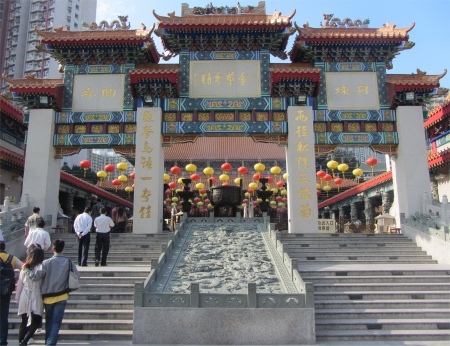 Entrance to Wong Tai Sin Temple |
We slowly climbed the steps up to the main temple and peered inside. Sadly photography was not permitted. We were bowled over by the spectacle. Three very large Buddhas sat within a glass case. Most stunning of all were the towering walls within the room, crammed with about 12,800 miniature statues, all in slightly different poses. Each of the 20cm tall Buddhas had a tiny filament light flickering above it; safer than candles I guess, but the sight of almost 13,000 tiny flickering lights over legions of smiling Buddhas was moving. Various prayer wheels were suspended from the high ceiling, each prayer also accompanied by its flickering light too.
Soothing chants emanated from hidden depths in the building. The sheer size of this building coupled with the vast army of smiling dimly lit Buddhas emanated some powerful vibes.
Outside, I got talking to an old Chinese man who had a grasp of English. He told me that people used to be interred in the surrounding hills, but, since space is limited, now almost all are cremated and end up in such establishments as Po Fook Hill Temple. He led me across the courtyard, and pointed out another hill in the distance. "That is the hill for Christians," he told me. "There is a church on top, and people are buried there," he added.
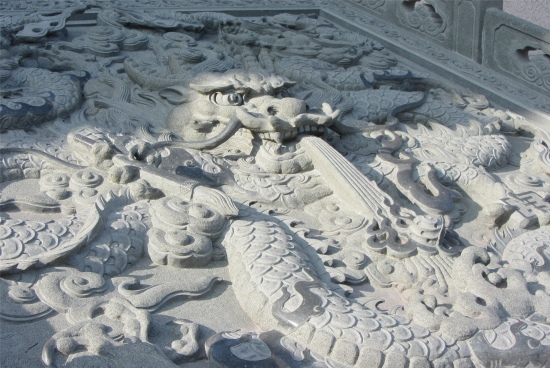 Fire Breathing Dragon |
Back down in Sha Tin, we enjoyed a delicious lemon tea with honey before catching more trains to Wong Tai Sin, to explore the massive temple complex there.
Wong Tai Sin, a Taoist temple established in 1921, is one of the most famous temples in Hong Kong. It is the city's most popular place of worship because of its reputed good blessings, or for wishes almost exclusively centred around money. People flock here to earn enough merit for a big win at the horse races, the lottery or any other windfall the powerful Wong Tai Sin, god of good fortune and healing, may bestow. It is worth a visit simply just to watch the crowds of devotees. It is often referred to as Sik Sik Yuen Temple, probably because Sik Sik Yuen is the actual Taoist organisation that provides administration for the temple. A crowded, colourful spectacle, Wong Tai Sin Temple was founded on the lower slopes of Kowloon Hills over half a century ago after a shepherd boy gained immortality through his good deeds and mystical healing powers.
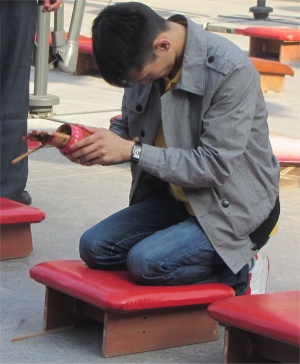 Divining Fortune Sticks |
Dan had come across this before at the many temples he had visited in Japan. There he had been invited to partake in this ritual. The soothsayer told him that he will suffer a terrible disease and people would disown him. Hmmm..... not all bright and cheery these fortune tellers.
The architecture of Wong Tai Sin Temple is in the traditional Chinese temple style: grand red pillars, a magnificent golden roof adorned with blue friezes, yellow latticework, and resplendent multi-coloured carvings. The temple grounds also feature three memorial archways. The first one stands outside the temple and is carved with the name of the temple. Walking past the soothsayers and the fortune-telling stalls, there is another memorial archway. Continuing further along a third memorial archway is standing. Memorial archways are a common feature of traditional Chinese architecture. Also at the temple is the Nine Dragon Wall, a replica of the renowned Nine Dragon Wall in Beijing, and the Good Wish Garden, a miniature copy of Beijing's Summer Palace.
Sadly while walking around the Good Wish Garden, we were politely asked to leave the complex, it was closing time.
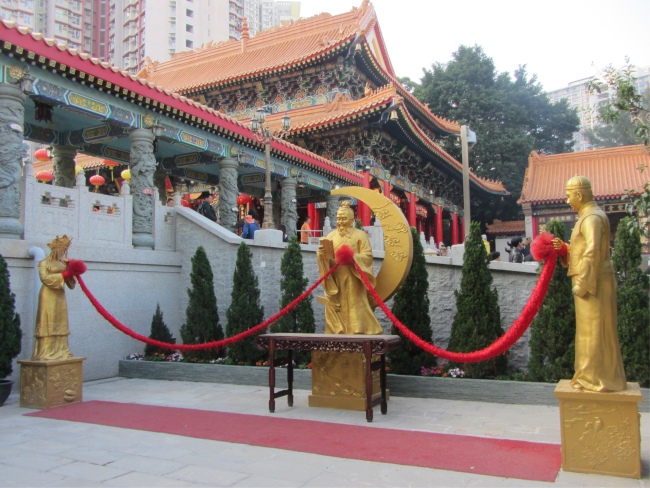 Yue Lao and Couple - Yue Lao is the Matchmaker God in Charge of Marriages |
Strolling down the glitzy road after our meal, we identified bars with sports being shown on large TVs. Progress was impeded a little as young women tried to cajole us into entering the girlie bars, but we would have no truck with them. Eventually we settled on the White Stag, a bar with football, rugby and cycling being displayed on screen.
This pub could have been in the middle of London; full of British. There was a selection of lagers available, the only bitter being Tetley. Here we were in Hong Kong, drinking beer from Yorkshire. The bar possessed a lively atmosphere, and most of the customers seemed to be acquaintances.
In the background, a pub quiz was taking place. At first we thought the questions were emanating from a computer somewhere, with a squeaking, whining voice emulating that of those anonymous TV game show hosts. Then I spotted a guy sitting at a table with a laptop, whose lips moved in synchronism to the questions. He was the question master, though why he should put on that stupid voice I'll never know.
The man who appeared to be in charge of the bar, a chap who oozed friendliness and professionalism simultaneously, seemed to know all his customers well, and would occasionally go out of his way to deliver drinks to them and have a chat. He made it his business to get to know us, and soon we were chatting. "How did you get to run a business like this?" I asked. "I came to Hong Kong as a backpacker 20 years ago, and found work in a bar as you do. Then 10 years later I took this bar on," he told us.
"You seem to have an abundance of expatriates in here, " I said. "70% of them live here, and 20% visit here on a regular basis for business, and I've got to know them. The other 10% are tourists passing through," he explained.
We chatted a few times during the course of the evening, and we discovered the question master originated from Pittsburgh. All in all, we had had an enjoyable day of culture.
 Nine Dragon Wall |
